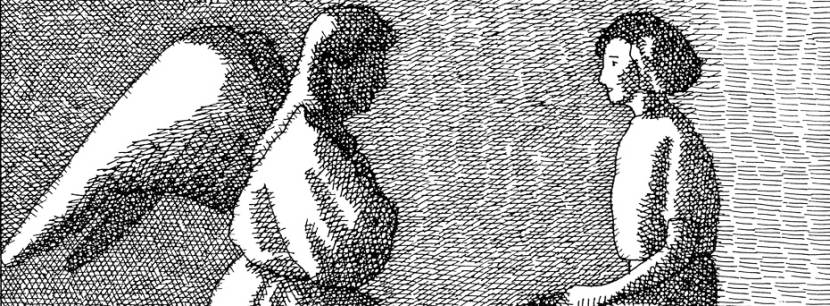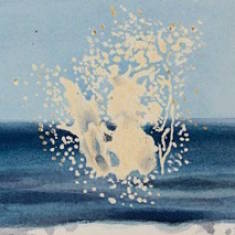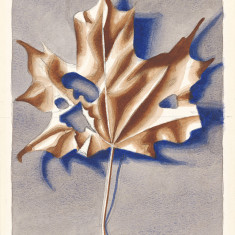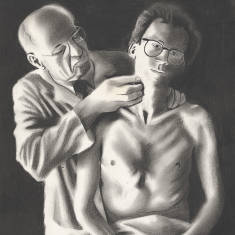History of Art
In art school, Robert once received a mark of “D” for an essay he’d written on Goya. The professor noted in the margin that Robert had written enthusiastically and at length on multiple Goya works when the instructions stipulated a short paper on a single work. This seems humorous now in light of the artist’s passionate interest in the subject. Robert was a sponge. He often quoted from famous works, perhaps using one telling detail in a startlingly new context. Influences range from Leonardo da Vinci to Hokusai to comic books. Robert repainted Georgia O’Keefe’s Torn Leaf as a delicate watercolour. Goya’s Self Portrait with Dr. Arrieta became Robert’s Self –portrait with Dr. Langley. Picasso’s Gertrude Stein and Michelangelo’s God and Christ both appear in the cartoon Prufrock. Millet’s Angelus and Gleaners appear in the background of The Six O’clock News. David Hockney’s playful splash of water is a key element of Plunge. A surprisingly sustained influence was that of Edvard Munch. Munch’s paintings capture the emotional states of vulnerable figures, especially those unlucky in love and prone to illness. Robert identified on both counts and created his own series on these themes. Canadian artists Alex Colville and Miller Britain were admired for their depiction of ordinary people in images showing a precarious balance of conflicting forces, internal and external. Robert’s work also grappled with ideas by leading artists like Andy Warhol and Marcel Duchamp, though he devised solutions to suit his own style and situation.





